ONI hosted the Boston Super-Resolution Summit at the Museum of Science on October 19, 2023. This marked the third leg of a global event series focused on super-resolution microscopy, highlighting the advancements in research techniques and the faces behind it. The series had previously made stops in San Diego and London, with the grand finale scheduled for Frankfurt on November 9.
The choice of Boston as a central location for this Summit was not incidental, given its prominence in the fields of pharmaceuticals, biotechnology, research centers, and academic institutions, all of which leverage super-resolution microscopy in their endeavors. The venue, with its stunning views and dedication to all things science, offered attendees a unique experience overlooking the tranquil waters of Boston and the iconic city skyline.
The event mission: to advance microscopy and collaboration
The Super-Resolution Summit has a clear mission: to advance the field of super-resolution microscopy, provide a platform for knowledge-sharing and collaboration, and keep attendees up-to-date with the latest innovations and techniques in this specialized domain. The event combined enlightening talks, networking opportunities, and live demonstrations, including a spotlight on the Nanoimager and the dSTORM Training Kit, a new addition to the product lineup. The ONI Training Kit™ for dSTORM is designed to simplify the learning process for both new and existing users, facilitating their understanding of the fundamentals of single-molecule localization microscopy.
Furthermore, the event offered attendees the chance to engage in one-on-one consultations in a private meeting room. This was an invaluable opportunity for discussing super-resolution questions and research needs with experts in the field.
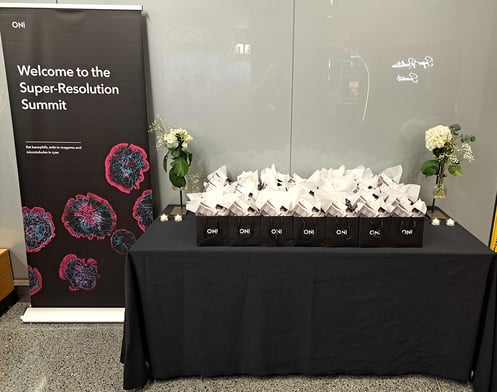
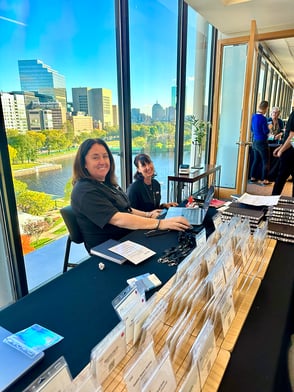
Distinguished speakers and their contributions
Luke Lavis, Senior Group Leader and Head of Molecular Tools and Imaging at HHMI Janelia Research Campus, kicked started the scientific talks. In his presentation, he shared insights into his lab's groundbreaking work in the design and synthesis of small-molecule tools that interact with light. His efforts have modernized fluorescent dye chemistry, resulting in the creation of the Janelia Fluor® dyes. These dyes are now widely adopted in labs worldwide, enabling sophisticated imaging applications in cells, tissues, and animals. Dr Lavis's contribution to brighter and more efficient dyes has opened new frontiers in single-molecule imaging, allowing researchers to obtain clearer and more precise images, revolutionizing microscopy.
This was followed by a talk from Florian Schueder, a Postdoctoral Fellow in the groups of Joerg Bewersdorf and Jorge Galán at Yale University, who is exploring the fascinating world of fast and highly multiplexed DNA-PAINT. Dr Schueder and colleagues have extended sequential multiplexing to more than 100 targets, advancing the capabilities of super-resolution microscopy. Additionally, his talk covered the development of barcoded multiplexing with FLASH-PAINT, a technique that promises to take the study of subcellular structures and processes to new heights, allowing researchers to uncover intricate details with greater efficiency and precision.
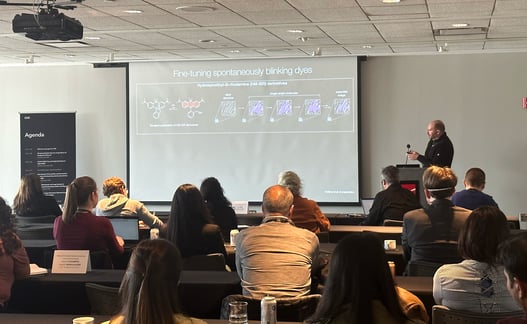
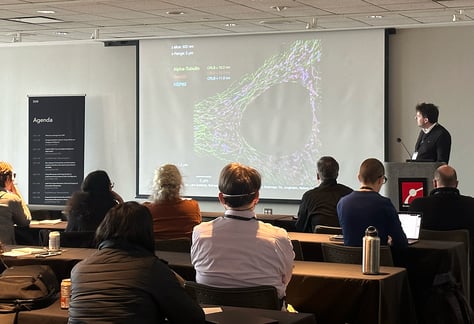
Dr Randy Stout, associate professor at NYIT, is a neuroscientist and cell biologist interested in unveiling the role of brain extracellular vesicles using quantitative dSTORM. Dr. Stout's works to combine microscopy tools to enrich his understanding of gap junctions. Much like many of the presenters from this Summit, he looks to harness a variety of microscopy technologies to enhance his understanding of these processes and has forged ahead through correlative combinations of STED, dSTORM, and confocal microscopy. We share a goal of making these technologies more accessible to a wider base of users and he shared some innovative approaches to training with virtual reality to improve onboarding users to systems like the Nanoimager to increase experimental output from his lab and through his many collaborations with others looking to take advantage of SMLM. His recent work focuses on the formation and release of EV's at the gap junction, how the thyroid hormone mediates this process, and the characterization of EV surface and cargo molecules isolated from those junctions using ONI's EV Profiler Kit.
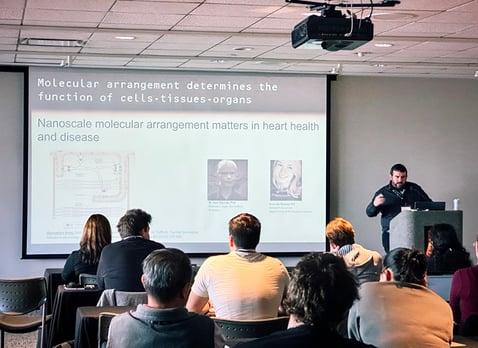
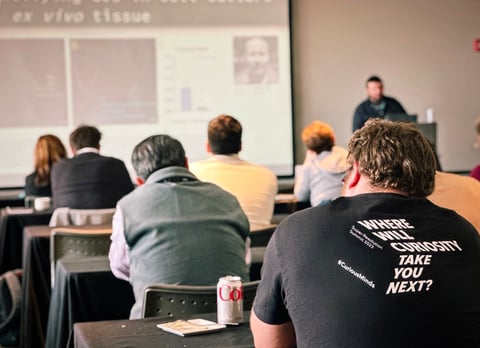
After the first break and networking sessions, talks continued with Dr Emily Mace, Associate Professor of Pediatrics at Columbia University, specializing in Pediatrics Immunology. Her presentation focused on the fascinating realm of human natural killer cell migration. Her research delves into critical areas of primary immunodeficiencies, with a specific emphasis on cell migration, innate immunity, microscopy, and image analysis. By studying these aspects, Dr Mace is contributing to our understanding of the human immune system and exploring ways to enhance its efficiency in combating diseases.
Then, it was Dr Haonan Lin’s turn, a Postdoctoral Associate at Boston University working in Professor Ji-Xin Cheng’s lab. His work is at the forefront of label-free super-resolution chemical imaging of intracellular metabolites. His work is driving innovation in the realm of microscopy by enabling researchers to visualize and analyze intracellular processes without the need for exogenous labels. Dr Lin's research has the potential to unlock new insights into cellular metabolism and the dynamics of intracellular molecules, promising to reshape our understanding of biological systems.

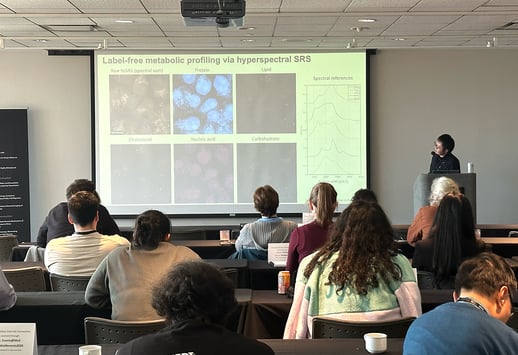
Dr Sethu Pitchiaya, an Assistant Professor at the University of Michigan, shared his insights into understanding how mammalian cells respond to stress and how these responses go awry in degenerative pathologies and cancer. His multidisciplinary research spans RNA biology, cell biology, biophysics, and cancer biology. Dr Pitchiaya employs advanced methodologies, such as single-molecule microscopy and high-throughput imaging at high resolution, to push the boundaries of science. His work has the potential to uncover critical insights into cellular responses to stress, which can have far-reaching implications for human health and disease.
Finally, Professor Samuel Hess from the University of Maine is renowned for his pioneering work in biophysics and fluorescence microscopy. He is known for developing fluorescence photoactivation localization microscopy (FPALM), which has revolutionized imaging capabilities for life scientists in the last few decades. In his presentation, Prof. Hess delved into the significance of super-resolution microscopy in illuminating biological functions and its potential in the fight against diseases. His research continues to drive advancements in imaging technology and deepen our understanding of complex biological phenomena, offering hope for improved diagnostics and treatment strategies.
Live product demonstrations, networking and a unique venue!
The Boston Super-Resolution Summit showcased the brilliance and innovation of these speakers, offering attendees a unique opportunity to gain profound insights into the future of microscopy and its myriad applications in science and medicine. Each speaker's work contributes to expanding the boundaries of super-resolution microscopy, offering potential solutions to some of the most pressing questions in the field. In addition, plenty of networking opportunities were offered during the breaks, as well as live demonstrations from ONI's product - our single-molecule localization benchtop microscope, the Nanoimager; our consumable kit, such as the Discovery KitTM: dSTORM in Cells; and our cloud-based data analysis software, CODI. This satisfied all curious minds attending the event, regardless of their level of experience with super-resolution microscopy!
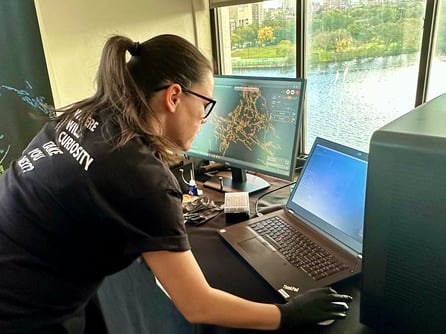
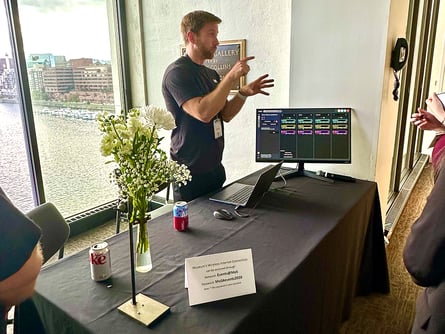
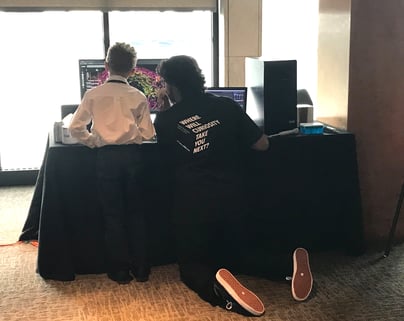
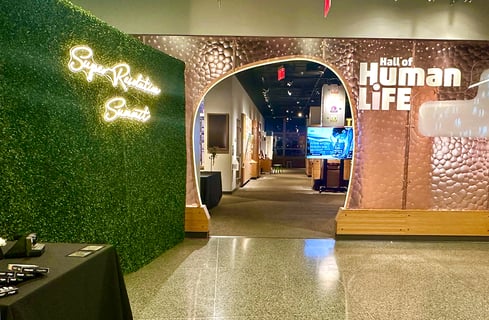
The Summit concluded with a memorable evening in the "Hall of Human Life," where attendees enjoyed a fun happy hour and explored the interactive section of the museum. This provided a unique opportunity to network, engage with the Nanoimager, and learn more about Foldscope, an innovative paper microscope with a mission of making science accessible to all.
"It’s a rare opportunity to gather such an esteemed group of speakers and researchers all focused on pushing microscopy to its limits. This group fundamentally have chosen a hard and unbeaten path developing and utilizing high-resolution microscopy and continue to forge ahead to pave the way for others to follow.We can't wait to build on this momentum as we look ahead to the final Super-Resolution Summit of the year in Frankfurt. It's an exciting time for us and the entire super-resolution microscopy field." said Jason Jell, Vice President of Marketing for ONI.
The Boston Super-Resolution Summit not only illuminated the future of microscopy but also fostered collaboration and knowledge exchange among the brightest minds in the field. As it continues to travel the globe, it promises to further revolutionize our understanding of the microscopic world. The next and final Summit of 2023 will take place in Frankfurt (Germany) on November 9, 2023. Click here to learn more and secure your spot. We look forward to welcoming you as we continue this journey together!
Are you a #CuriousMind?
Embark on a journey of curiosity and exploration with ONI! Discover more about our innovations and pioneering advancements by visiting oni.bio/curiousminds
Share this article: